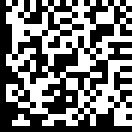Silicon Alley Insider drew my attention to a new project at Google designed to embed 2D Barcodes into print ads. On the surface this seems like an interesting idea and I like the 2D/QR/Semacodes. They are pretty easy to deal with as a geek and in theory can provide shortcuts for text entry for URLs, text and phone numbers. I say in theory because I’ve become pretty damn fast with T9 on the N95 and it’s hard to beat QWERTY for entering URLs, the main thing you see 2D codes represent.
Google’s idea is not new if you consider the CueCat from early 2000 which as you might recall, sucked. It sucked (and boy did it ever) because the idea was that when you’d see a code in a magazine you would then get up from your couch and bring your magazine over to your computer where the CueCat was tethered. This is not exactly how people consider doing things. When you are already at the computer, why not just type the url directly in rather than go through a special process which takes more time?
This brings me back to QR Codes … We are still in the early days here and I’m guessing the only people who really care are the mobile geeks. It’s great that it’s “really big in Japan,” but they’ve been mobile focused for a long time — and this is an entirely new way to do things for Americans. My Nokia N-Series mobiles have had access to barcodes for a while and I’ve dabbled. You can hit that one at the top of the post to go right back to my site if you like – helpful I know.
The issue which could very easily kill adoption on arrival is that you have to load an application on your phone other than the camera in order to make this useful. A lot could be solved with some software engineering and I’d like to see that happen, but it’s likely to be a forward moving thing — and not really able to help those with current high end handsets.
Nokia is actively experimenting with additional functionalities through betalabs and location tagger is a good example of a small step towards embedding new functionality. While it’s an application you have to run, it can be set to run in the background on startup and is likely to find its way into the OS itself with a future (FP2?) release. I’m willing to bet that we’ll see embedded 2D codes and a reader in the imaging application within Android software stack when it arrives this year.
Software applications can show us how things work, but as a long term solution they run the risk of keeping QR codes outside of broader adoption. The gimmick of seeing the code on an ad is not enough to get this to fly … ease of use and convenience through embedded functionality is what we really need to see.
Technorati Tags:
Google, Marketing, N-Series, N95, Nokia, Nokia Beta Labs, S60, barcode, QR, semacode


In 2005 I saw a presentation by Boston-based Scanbuy, who had a solution to scan by taking a photo with your cellphone.
There was at least one other company I saw with virtually the same thing.
I would think they would be able to allow sending of the picture to their server, where the processing could take place, so eliminating the need for any app to run on the phone.
The phone’s browser could then display the relevant links for accessing information, etc.
Though you have to send it to them or have it sent via an application … and wait for a reply. At least with scanbuy you’ve made a conscious decision to comparison shop. Seeing a code in a print ad or outside on your commute you need to figure out what it is and then understand what to do.
Embedded functionality would make this all much easier — if someone snapped a pic of the thing to begin with of course.
Based off the award winning Lavasphere technology developed in Germany by Gavitec, the NeoReader features NeoMedia’s patented resolution technology combined with Gavitec’s ultra-small footprint and platform independent algorithms. It is able to read and decipher all common non-proprietary 2D codes (Data Matrix, QR, Aztec, Maxi) as well as URL embedded 2D codes and all 1D UPC/EAN/Code 128 open source codes. The NeoReader supports direct and indirect code linking, which guarantees maximum interoperability with already existing platforms like 2D Data Matrix Semacodes, and Japanese QR links. This allows the user to click on a variety of codes with a single application installed on their mobile device.
The NeoReader ushers in and inaugurates a brand new era of innovative mobile enterprise and optical code reading solutions for the wireless industry. Visit get.neoreader.com to download the free application, and instantly transform your mobile phone into a universal code reader.
http://www.neoreader.com
I tired the neoreader and it’s still the same issue. Application focused. It also refused to read the ISBN number (one of the codes said to be supported) from a book.
How can i distinguish between 1D and 2D barcode read form a 2D barcode scanner